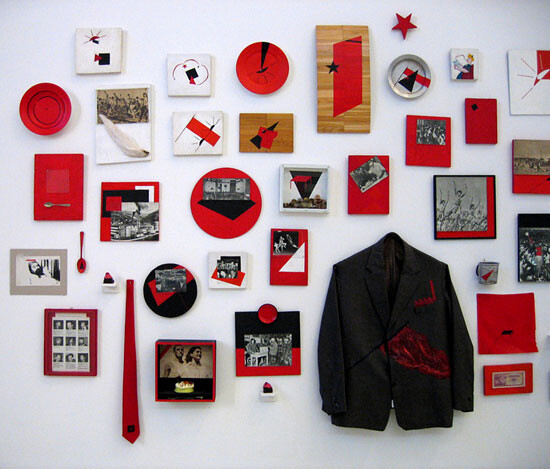The modern/contemporary subject tends to react to a “system” with a desire to change it, to undermine its order or escape its control. At the same time, the dominant system seems almost omnipotent, because the technology at its disposal is incommensurate with the forces and capabilities of an individual. Thus, the fight against the system appears lost from the beginning. That is why the modern subject is so often described as the subject of an impossible desire, or rather of a desire for the impossible—a desire doomed to frustration. An individual seems condemned to a state of ontological solitude without any chance for help from the outside: God is dead and the forces of nature are already under technological control. However, all systems, including modern and contemporary systems of control, are subject to forces of entropy. Modern technology is immune to divine intervention, but not to the fatigue of the materials of which it consists. Entropic processes permanently undermine every system, dissolving it into material chaos. The forces of entropy operate mostly underneath the surface of the world. Their workings remain unobserved and they sap energy from the system and render it unstable. Only after the system collapses into chaos does it become clear that it was the forces of entropy that undermined it—and without any conscious, heroic effort by the subject.
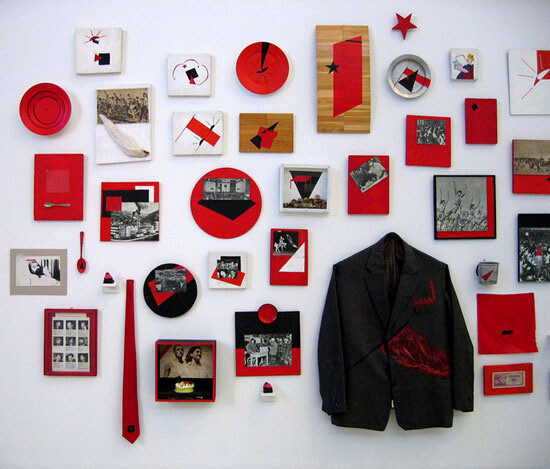

The modern/contemporary artist is a collaborator in this entropy. Every genuinely modern/contemporary artwork stages the processes of entropy within itself. Every such artwork operates by deforming and dissolving traditional artistic forms. It is in this way that an artwork gives to its spectator a promise that the system controlling this spectator’s individual fate will also be undermined by entropic forces and will eventually dissolve. However, the collaboration between art and entropy is highly ambiguous. By consciously staging the workings of entropic forces, art gives them a certain form. And by giving them a form, art reinscribes them into the existing system, or at least opens a way to build a new system upon a new foundation. Indeed, it is always hard to say what it is that actually provokes our anger: the stability of the system, or, on the contrary, the slow decline of the system—its loss of vitality, energy, and efficiency. Accordingly, it is hard to say what the modern subject really wants when it starts a revolt against the system: Does he or she want the end, the dissolution of this system and every other system together with it? Or instead the establishment of a new, more vital, energetic, efficient system?
We know that modern artists often protested against dominant artistic forms, accusing them of being old or even dead forms—while at the same time proclaiming their own art as living and vital. The same can be said about the neo-avant-garde artists of the 1960s and 1970s—it is never quite clear what they really want: the breakup of the system or its revitalization. To use the language of Walter Benjamin from his essay on violence, the modern/contemporary subject of artistic as well as political violence hesitates between “divine violence”—or, one can say, entropic violence that has no beginning and no end—and “mythological violence,” i.e., the desire to instrumentalize violence with the goal of establishing a new, revitalized, reinforced order. Form today’s perspective, one can say that only very few artists of the twentieth century resisted the seduction of the “new order” and remained faithful to their union with the forces of entropy and anarchy. One of these very few artists is undoubtedly Mladen Stilinović.
Stilinović’s art has an obvious critical edge. But when, for example, Stilinović reacted critically to the language of the official ideology of Tito’s time, he did not do so in the name of an improved ideology. He did not confront the official ideological message with his own. Rather, the artist demonstrated that this official message had de facto become a zero message. The ritualistic language in which this message was formulated and distributed had already been long subjected to the forces of entropy, and all that remained were words on paper, sounds in the air. Language became a material object that could be fragmented, displaced, reduced to zero. Stilinović operated with the language of the official ideology as the avant-garde artists operated with traditional paintings and sculptures. For them, a painting was simply a canvas covered with paint, sculpture was an object in space, and so forth. Stilinović expanded this strategy to encompass all cultural and ideological phenomena with which he had to deal. The party slogans were simply combinations of words—and words can be combined with other words. Written words are simply combinations of lines—and can be combined with other combinations of lines.
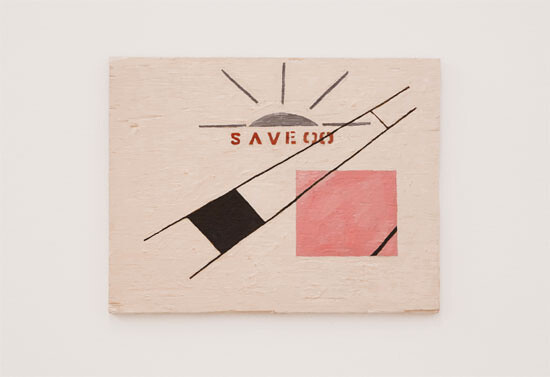

A political authority guarantees the stability of certain modes of speech, forms of behavior, images, and rituals. But these are all material objects and processes. And so the “spiritual,” ideological authority is not able to stabilize them, to guard them against the forces of entropy, against their dissolution in material flow, their fragmentation and recombination with other material elements of this flow. These are the forces that Stilinović stages in his works. All the elements of these works—whether texts, paintings, drawings, or films—seem to be included in this flow. They all seem to drift, shift, slip, and stumble into new combinations, contexts, and situations. No effort. No revolt. Rather, they let things go, and they move and slide in different directions—beyond the control of a political or cultural authority. The artist rejects any attempt to give this drift toward anarchy and chaos any definite direction, to let it culminate in any new order. Socialism collapses. Capitalism triumphs. But the process of entropy goes on. Stilinović now demystifies money as he had earlier demystified party language. After all, money is also merely images, signs among other signs. They are also made up of material components, their forms can also be destabilized. A room remains a room—be it an exhibition space, a bank, or an office of the Party committee. And an image remains a combination of colors and forms, be it a portrait of a leader, a currency unit, or a combination of both.
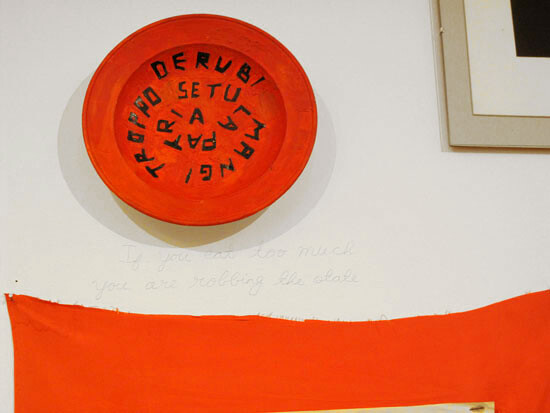

This shifting and sliding of images and signs on the blank surface of nothingness is a strong reminder of the Suprematist art of Kazimir Malevich. Malevich also rejected any attempt to interpret his art as a foundation for a new order. In Malevich’s Suprematist paintings, geometrical forms drift and slide in a way that is more deconstructive than constructive. Unlike Mondrian’s paintings or the geometrical constructions of Bauhaus artists, Malevich’s Suprematism does not create a stable geometrical order that can serve as a starting point for ordering architecture, living space, and society in general. Not accidentally, Malevich was extremely skeptical about the possibility of building any new utopian order.
Already in 1919, Malevich wrote the famous text “God Is Not Cast Down,” in which he criticized Russian Constructivist artists for submitting their art to the goal of creating a new socialist state.1 Malevich saw the communist project as a repetition of the Christian project in a new, technological form. Christians wanted to enter paradise, he wrote, by achieving inner, spiritual perfection through permanent self-improvement—through working on their souls. Communists wanted to enter the radiant future by perfecting the material conditions of human existence, by turning the whole world into a factory. However, Malevich did not see any substantial difference between the Church and the factory: both wanted perfection, and both were unable to achieve it because the material world is permanently subjected to the forces of entropy. So Malevich proposed that the artist relax, that the artist give up the ambition of shaping the permanent flow of the material world. Instead, Malevich preached that laziness and inaction would release the entropic forces that have true revolutionary power.
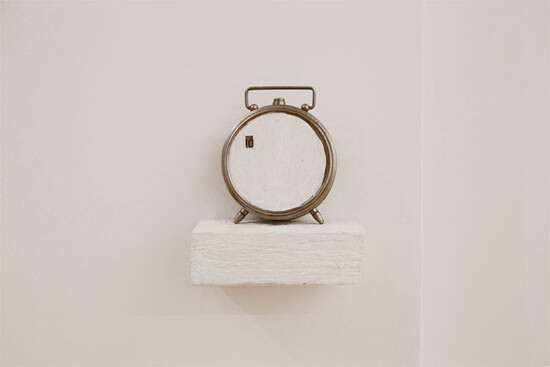

The references to Malevich’s Suprematism remain noticeable throughout the whole of Stilinović’s work. Malevich was not seduced by the enthusiasm for life-building in post-revolutionary Russia—and neither did Stilinović allow himself to be carried away by the enthusiasm for the new democratic/capitalist opening. His distance from the neoliberal utopia that replaced the communist utopia was, of course, not dictated by any “ostalgia”—conservative nostalgia for the old socialist order. Almost immediately after the establishment of the new capitalist order, Stilinović began to ironize it in a way analogous to his ironization of the old socialist order. No aspect of the new utopia was spared—from the power of money to knowledge of the English language as a precondition for an individual’s functioning in the new economy. Stilinović’s statement “The artist who does not speak English is no artist” became so famous precisely because of its matter-of-fact character. Malevich, like many other representatives of the early avant-garde, was not ready to submit his artistic practice to ideological control by the new socialist powers. Stilinović demonstrates his unwillingness to accept the new rules of the game and submit his own work to evaluation by the international art market. Thus, even if the social and political orders that were rejected and ironized by both artists were not identical—and even opposed to each other—the contemporary gesture of rejection as such repeats the avant-garde gesture. However, this repetition of the avant-garde gesture does not equal repetition of the avant-garde’s forms.
As I have already said, art consciously stages unconscious entropic processes—and thus gives them a certain form. This form becomes solidified, petrified, and canonized by time. Malevich is no exception. Malevich investigated and deconstructed the high artistic canon of the past and laid bare its geometrical basis—culminating in the Black Square, which demonstrated the formal geometrical structure of any standard painted image consisting of a rectangular canvas and a frame. The geometrical forms that Malevich used in his own Suprematist paintings referred to Platonic ideas, to the Western philosophical and artistic tradition of mathematizing and geometrizing nature. These forms suggested a higher, “cosmic” level of reality towards which the imagination of the spectator was to soar. Stilinović, on the contrary, takes all possible fragments and bits of everyday reality, language, documentation, propaganda, and so forth, and lets them drift and slide on the blank Suprematist surface. The celebration of the reality of everyday life was a common feature of many artistic practices and philosophical discourses of the 1960s and 1970s. But Stilinović’s transportation of the everyday into the Suprematist heaven of pure ideas is not only a celebration of the everyday world. Rather, the texture of everyday life demonstrates itself as porous and fragmented—open to the Suprematist nothingness that this texture is unable to fully capture.
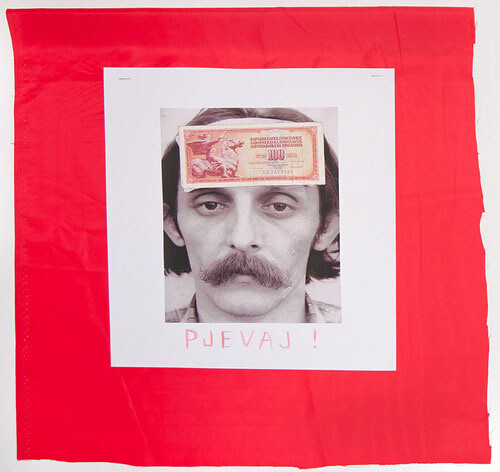

Stilinović’s para-Suprematist images remind me of the technological garbage that now circulates in the cosmic space around the earth. It is where the dissolved fragments of the everyday technological world enter the stage of their eternal return—and fill the heaven of our contemporary civilization. In fact, Plato himself saw the possibility for everyday garbage to contaminate the heaven of pure ideas. In his dialogue Parmenides, Parmenides asks young Socrates if he would include in the realm of eternal ideas “such things as hair, mud, dirt, or anything else which is vile and paltry; would you suppose that each of these has an idea distinct from the actual objects with which we come into contact, or not?” Socrates responds “no” and states that this suggestion, were it to be accepted, would bring his teachings on ideas to absurdity: “Yes, Socrates, said Parmenides; that is because you are still young; the time will come, if I am not mistaken, when philosophy will have a firmer grasp of you, and then you will not despise even the meanest things; at your age, you are too much disposed to regard opinions of men.”2 Now, Stilinović is obviously totally consumed by art and cares even less than Malevich about what other people think. So he is not afraid to bring his own artistic method to the point of absurdity. On the contrary, Stilinović combines a certain positivism with an acceptance of, and even delight in, absurdity.
This delight in absurdity is a part of the Dadaist and early Surrealist heritage. But Stilinović also radicalizes the Dadaist and Surrealist approach. His famous series of photographs The Artist at Work is a good example of this. This work reminds me of a passage from the first Manifesto of Surrealism by André Breton: “A story is told according to which Saint-Pol-Roux, in times gone by, used to have a notice posted on the door of his manor house in Camaret, every evening before he went to sleep, which read: THE POET IS WORKING.”3 Breton shares the perception of the poet as working in sleep because he believes that true poetry and art consist of the production of dreams. During sleep, our imagination becomes liberated from all the restraints and obligations imposed on it by our everyday mode of existence. Here, the poetic dream is opposed to prosaic reality. And so it is important that, going to sleep, the poet closes the door behind him—to prevent the free flow of his imagination from being disturbed by the intrusion of everyday reality and the gaze of others.
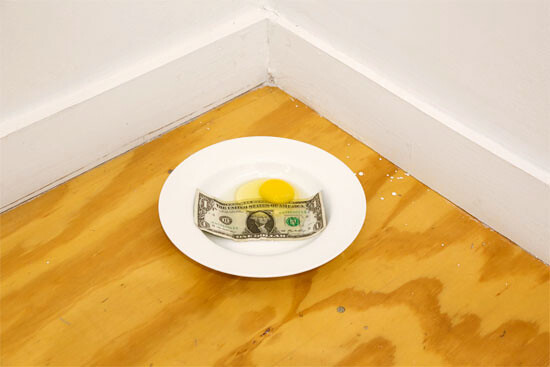

However, Stilinović allows himself to be photographed during sleep. Instead of poetic dreaming, we are presented with a prosaic image of a sleeping body. Here, the sleeping artist is not a poet who forgets the world, flying from the world into a poetic dream—thus escaping the gaze of others. Rather, the artist completely delivers up his body to the gaze of spectators—unprotected and uncontrolled. In sleep, one looses the ability to manipulate, direct, and seduce the gaze of the spectator. Stilinović’s sleeping artist reminds one more of Sleep by Andy Warhol than of Breton’s sleeping poet. Presenting a sleeping body instead of a poetic dream, Warhol asserts once more the final victory of positivism and everyday life over “metaphysics” and “spirituality.” But in Warhol’s video, the sleeping man is, of course, an actor and not the artist himself. Warhol does not relinquish but rather strengthens his manipulative, controlling position of authority. When the artist sleeps, he lets the life around him and in him flow without control—thereby creating beyond work. Thus, the artist undermines the obligation to work—the true common ground between ideologies of capitalism and communism. It is this obligation to work that our everyday life depends upon.
Indeed, the power of the everyday was not taken as seriously in the socialist East as it was in the capitalist West. Of course, communist ideology was a materialist and atheist one. However, under the conditions of socialism, everyday life was subjected to ideological definition and interpretation to a degree that reminded one of medieval Europe. Each everyday decision was analyzed and justified in ideological terms: Does this decision serve the cause of building the socialist future? Does this decision conform to Marxism and its ideological principles? Here, indeed, the idea of every seemingly small and insignificant everyday thing was separated from the thing itself—and submitted to ideological scrutiny. Thus, the socialist subject always mediated between two worlds: an ideological world and a world of everyday survival.
The rejection of official ideology has not abolished the ideological, spiritual, utopian world altogether, but rather transformed it into blank nothingness. This nothingness is not simply an absence of ideology but is rather a space of ideological freedom that should not be identified with freedom from ideology. It is this space of freedom that came to be endangered after the end of socialism. The victory of Western positivism meant the abolishment of this blank space of ideological, subjective, inner freedom that was so familiar to Eastern European dissident artists and thinkers. Instead, the post-socialist subject became the slave of the everyday—like his or her Western counterpart. That is why the art of Stilinović is so different from the art of many of his Western contemporaries and colleagues. It is different because it continues to celebrate the experience of radical spiritual freedom. And this freedom dissolves not only ideology, but also any familiar social space—allowing nothingness to shine through the holes in our everyday world.
“God is Not Cast Down,” in Kazimir Malevich, Essays on Art, 1915–1933, trans. Xenia Glowacki-Prus and Arnold McMillin (Copenhagen: Borgen, 1968).
Plato, The Dialogues of Plato, vol. 4, ed. and trans. Benjamin Jowett (New York: MacMillan, 1892) →
André Breton, Manifestoes of Surrealism, trans. Richard Seaver and Helen R. Lane (Ann Arbor, MI: University of Michigan Press, 1969), 14.
